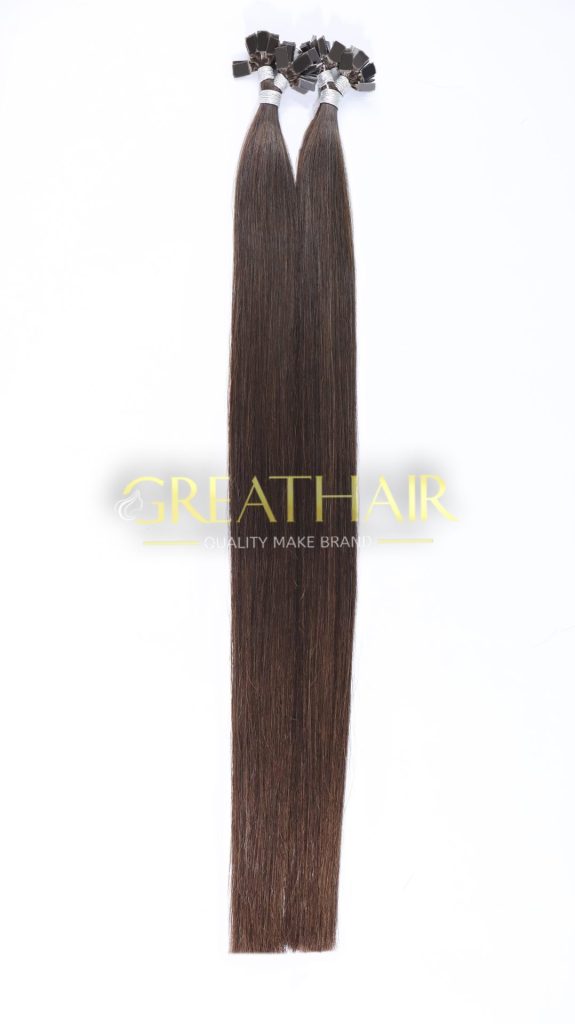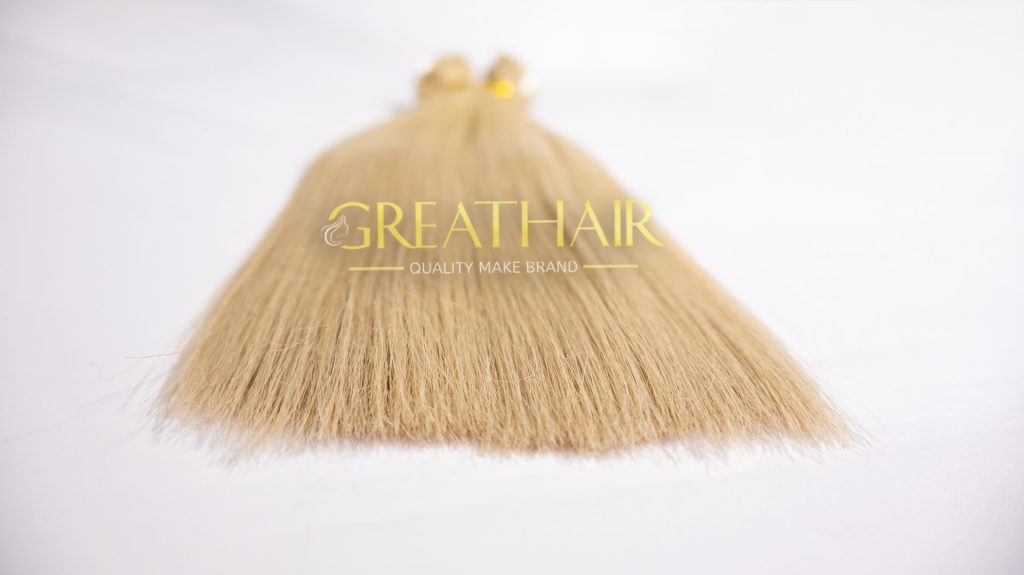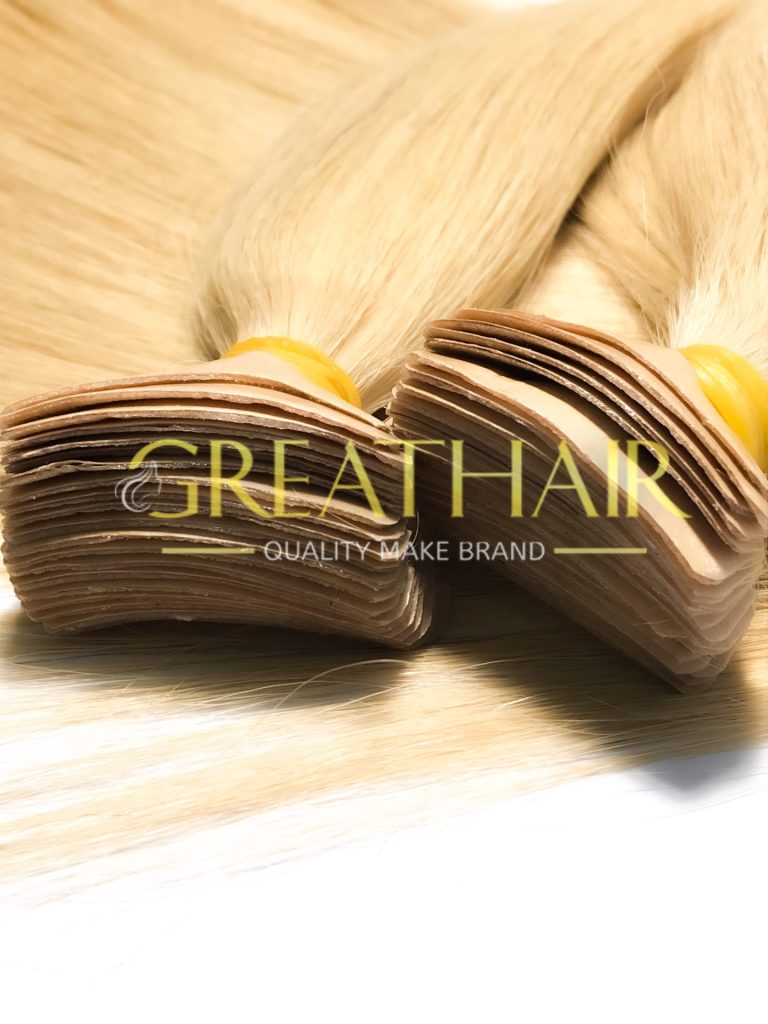
There are no products in the cart
Oct 06, 2025
Post by SEO Greathair
The question of who invented lace front wigs is not easily answered by pointing to a single individual, as their origins trace back centuries, woven into the fabric of fashion, culture, and innovation. From their beginnings among European aristocrats to their modern-day prominence on red carpets and social media, the journey of lace front wigs is a story of craftsmanship, creativity, and empowerment. This article from Great hair delves into the history of lace front wigs, exploring the pioneers and advancements that have shaped their legacy, all while addressing the central question: Who invented lace front wigs?

Who Invented Lace Front Wigs? A Journey Through History
What is a lace front wigs human hair? It is a hairpiece crafted with a sheer lace base at the front, where individual strands of human hair are meticulously hand-tied to create a natural hairline illusion. The rest of the wig is typically constructed using a more durable material, such as a cap or wefts, to ensure longevity and comfort. The lace at the front blends seamlessly with the wearer’s scalp, creating an undetectable transition between the wig and the skin.
This design allows for versatile styling, such as pulling the hair back or parting it in different directions, without revealing the wig’s edge. Human hair, sourced ethically from donors, provides a realistic texture, shine, and movement, making these wigs highly sought after by those who prioritize authenticity.
In the 16th century, lace front wigs emerged among European aristocracy, crafted by skilled artisans whose names have faded from record. These early wigs, addressing the question of who invented lace front wigs, used delicate lace bases with hand-tied human hair to mimic a natural scalp, creating a seamless hairline. Reserved for royalty and nobility, they symbolized elegance and served practical purposes like concealing hair loss or enabling disguise in the complex social courts of Europe. This meticulous craftsmanship laid the foundation for the lace front wig’s enduring legacy.
When did lace front wigs become popular? By the 17th and 18th centuries, wigs became fashionable beyond aristocracy, embraced by the growing middle class and theater performers for their versatility. The natural-looking lace front design became a key feature, with improved techniques making production more efficient. In the 20th century, innovators refined lace front wigs for broader appeal, while synthetic fibers made them affordable and durable. This shift transformed lace front wigs into a symbol of self-expression, embraced by celebrities and everyday individuals, cementing their place in modern fashion.
In the 1970s, Eunice W. Johnson, founder of Fashion Fair Cosmetics, revolutionized lace front wigs. Her refined designs used delicate lace bases for a natural hairline, making wigs more versatile and appealing. Johnson’s work empowered women, particularly African-Americans, to embrace their style, cementing her role in answering who invented lace front wigs in their modern form.
Madam C.J. Walker, America’s first female self-made millionaire, laid early foundations in the late 19th and early 20th centuries. Her hair care empire for African-American women included wigs, precursors to lace front designs. Walker’s focus on beauty and empowerment influenced the wig industry’s growth.
Countless wig makers and stylists also contributed to lace front wigs’ evolution. From 16th-century European artisans to modern technicians, their innovations in materials and techniques helped transform lace front wigs into a global beauty staple.
From their historical roots to modern innovations, their construction has evolved significantly, blending artistry with technology to create versatile, natural-looking hairpieces.
Centuries ago, lace front wigs were handcrafted by skilled artisans, primarily for European aristocracy. Using fine lace bases made of silk or cotton, through hand-tied lace construction, they meticulously tied human hair strands to mimic natural hairlines. This labor-intensive process ensured a seamless, breathable fit, laying the groundwork for the wig industry and fueling interest in who invented wigs.
By the 20th century, synthetic fibers transformed lace front wig production. More durable and affordable than human hair, these fibers broadened accessibility. Machine-made lace streamlined manufacturing, while heat-resistant synthetics allowed styling flexibility. These innovations built on the legacy of early wig makers, answering questions about who invented lace front wigs through collective advancements. Machine-made lace streamlined production while maintaining a lightweight, breathable cap feel.
Today, lace front wigs incorporate cutting-edge technologies. Advanced synthetics mimic real hair, and 3D printing enables custom fits. Scalp emulation creates hyper-realistic hairlines, while eco-friendly materials like biodegradable lace reflect sustainability trends. These developments continue to evolve the vision of those who pioneered lace front wigs, offering unmatched versatility in beauty.

Who Invented Lace Front Wigs? A Journey Through History
The red carpet has become a stage where lace front wigs shine, largely due to the influence of high-profile celebrities. Stars like Beyoncé, Zendaya, and Rihanna have made these hairpieces synonymous with glamour, effortlessly switching between sleek, natural looks and dramatic, avant-garde styles at high-profile events. Their appearances, whether at award shows or on social media platforms like Instagram, showcase the transformative power of lace front wigs, sparking widespread interest among fans and fashion enthusiasts.
This celebrity endorsement has shifted perceptions, positioning lace front wigs as not just a beauty tool but a cultural phenomenon. Social media further amplifies this trend, with influencers and celebrities sharing tutorials and styling tips, demystifying the process of wearing and maintaining lace front wigs. This visibility has cemented their status as a fashion essential, answering the curiosity about who invented wigs by highlighting their modern evolution into a symbol of style.
Unlike traditional wigs, lace front wigs are designed with a sheer lace base that blends seamlessly with the natural hairline, creating an undetectable finish that enhances their appeal. The ear-to-ear sheer lace allows seamless blending from temple to temple, increasing realism. This construction enables a range of looks, from subtle, everyday styles to bold, experimental designs. For those seeking a natural appearance, lace front wigs can mimic the scalp’s texture, offering sleek ponytails or soft curls that look as though they grow directly from the head. This includes styling versatility for updos, high ponytails, or sleek buns
For the more adventurous, these wigs can be styled with vibrant colors, like electric blue or fiery red, or crafted into intricate braids and voluminous waves that make a statement. The ability to customize lace front wigs to suit various hair textures, from coily to straight, ensures they cater to diverse aesthetic preferences and cultural identities. This flexibility has made lace front wigs a favorite among those who view hair as a canvas for creativity. Whether for a quick style change or a complete transformation, lace front wigs empower individuals to express their unique identities with confidence and flair.
To keep your lace front wig in pristine condition, proper care is essential. Below, we outline crucial maintenance tips and pitfalls to avoid, ensuring your wig remains a stunning part of your beauty routine.
| Maintenance Task | Frequency |
| Gentle Cleaning | Weekly or Bi-weekly |
| Conditioning | Monthly |
| Wig Storage | When not in use |
| Brushing | Daily or as needed |
By following these care tips, you can ensure your lace front wig remains as stunning as the day you bought it, echoing the craftsmanship of those who invented lace front wigs centuries ago.
The wig industry is embracing new approaches to meet the demands of modern consumers, blending aesthetics with environmental and cultural priorities:
The future of lace front wigs lies in cutting-edge technology and innovative design, promising to elevate their functionality and appeal.

blone-color-tape-in-straight-hair-extension
Lace front wigs have become a game-changer for individuals seeking to redefine their appearance with confidence. Their natural-looking hairline, a hallmark of the craftsmanship pioneered by those who invented lace front wigs, allows users to experiment with new looks without fear of detection.
| Wig Type | Impact on Self-Confidence | Reported Increase in Self-Esteem |
| Lace Front Wigs | Significant boost in self-confidence and self-expression | 78% of users |
| Traditional Wigs | Limited impact due to visible hairline | 45% of users |
The story of who invented lace front wigs is one of collective ingenuity, spanning centuries and continents. Their journey reflects advancements in craftsmanship, materials, and cultural attitudes, making them a powerful tool for self-expression. As new technologies and trends continue to shape the wig industry, the legacy of those who invented lace front wigs endures, inspiring confidence and creativity in every wearer.
For those seeking premium lace front wigs crafted from the finest materials, Great hair stands as the number one wholesale luxury Vietnamese hair factory. Renowned for exceptional customer service, Great hair is the top choice for those desiring natural, beautiful hair that elevates their style. Discover the luxury of Greathair’s premium hair products today and transform your look with confidence at Great hair’s official website.
We Will Contact You Shortly